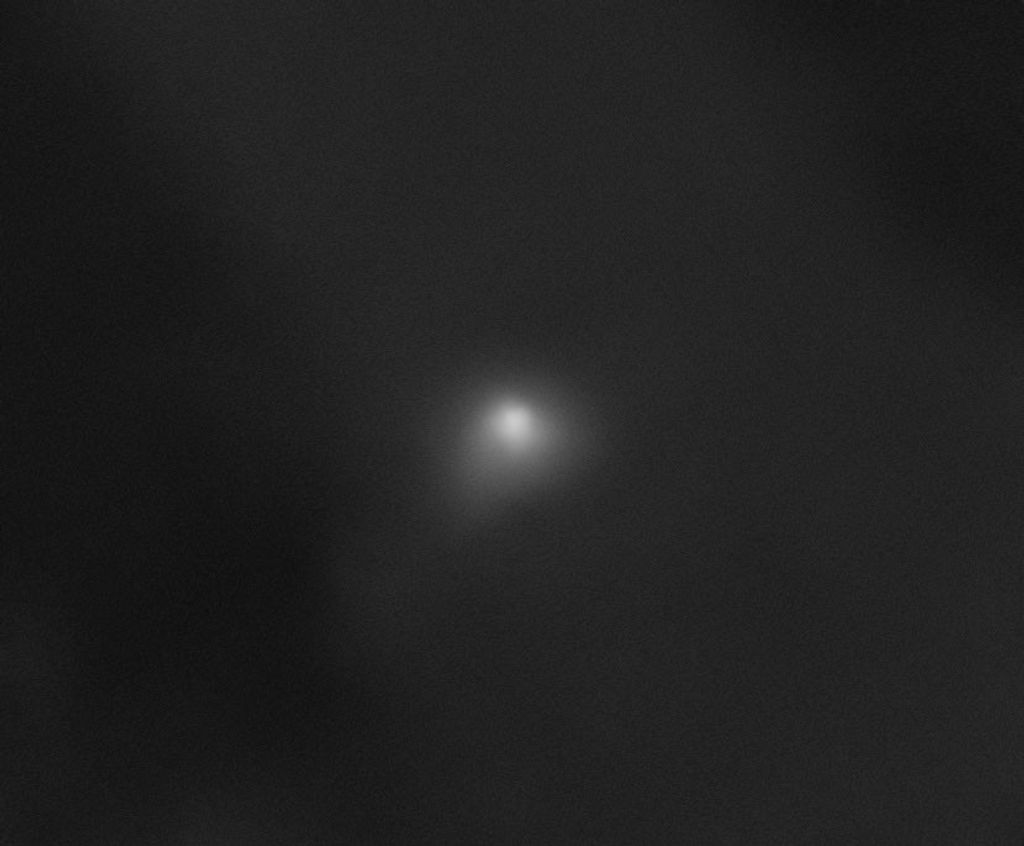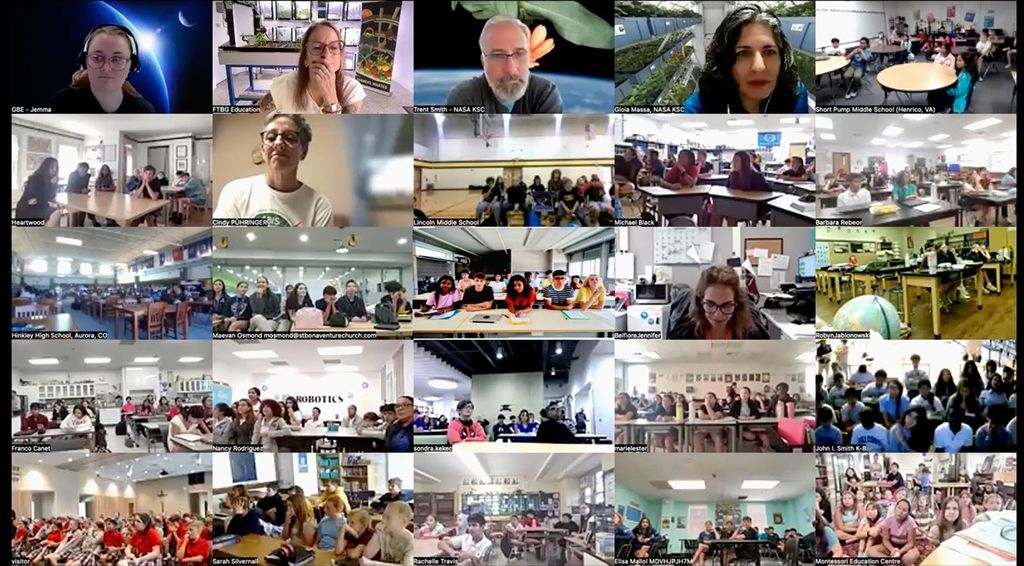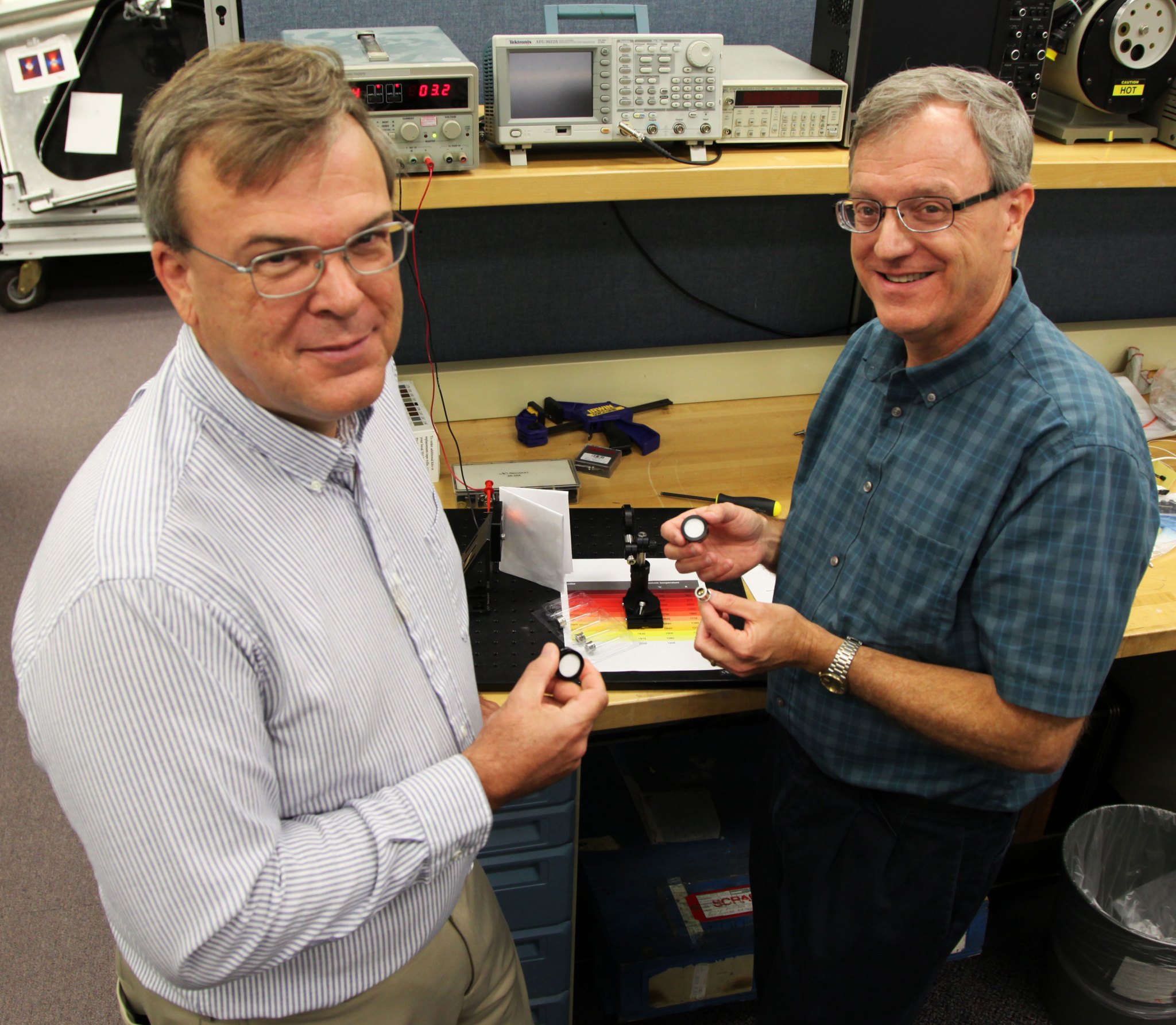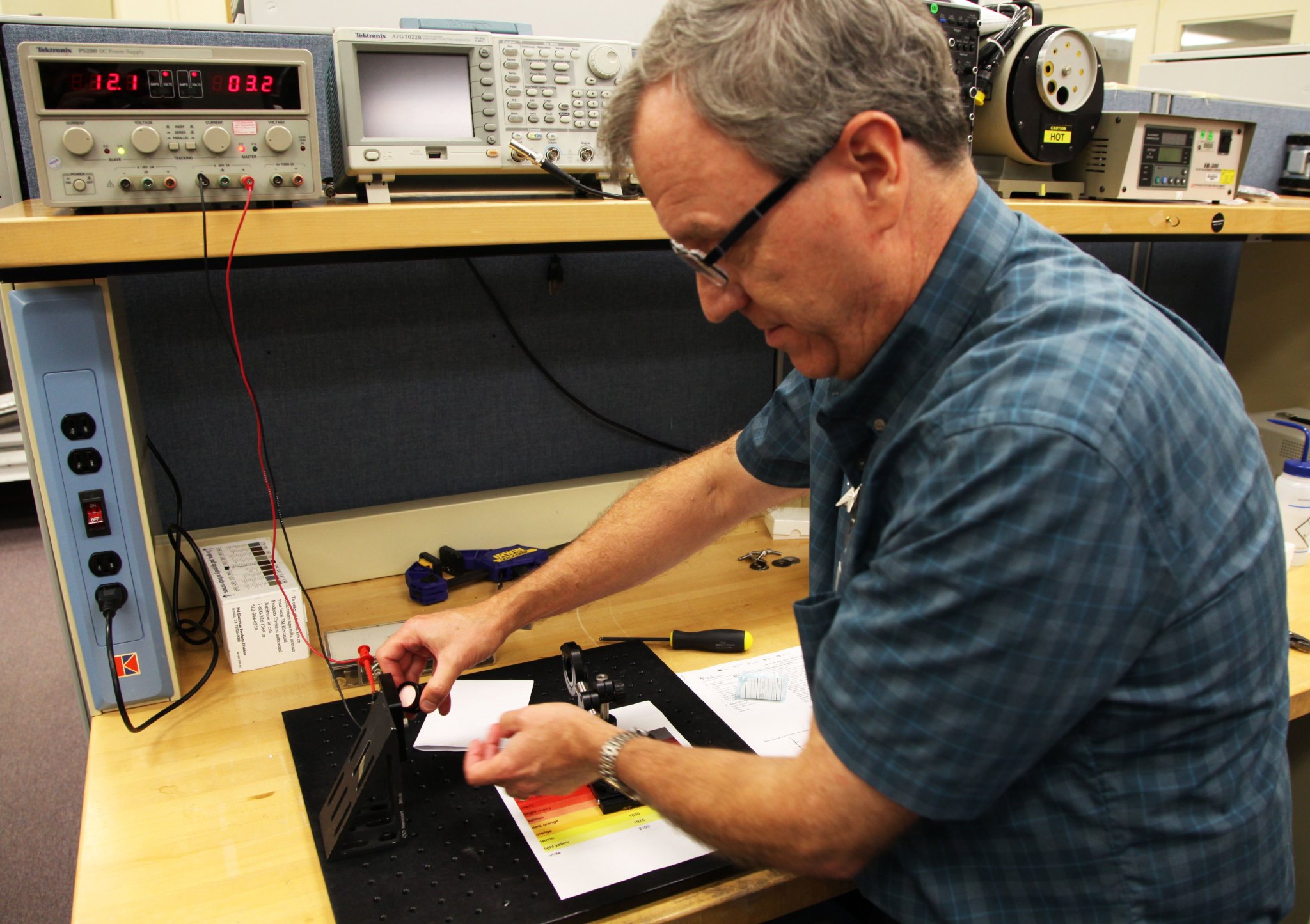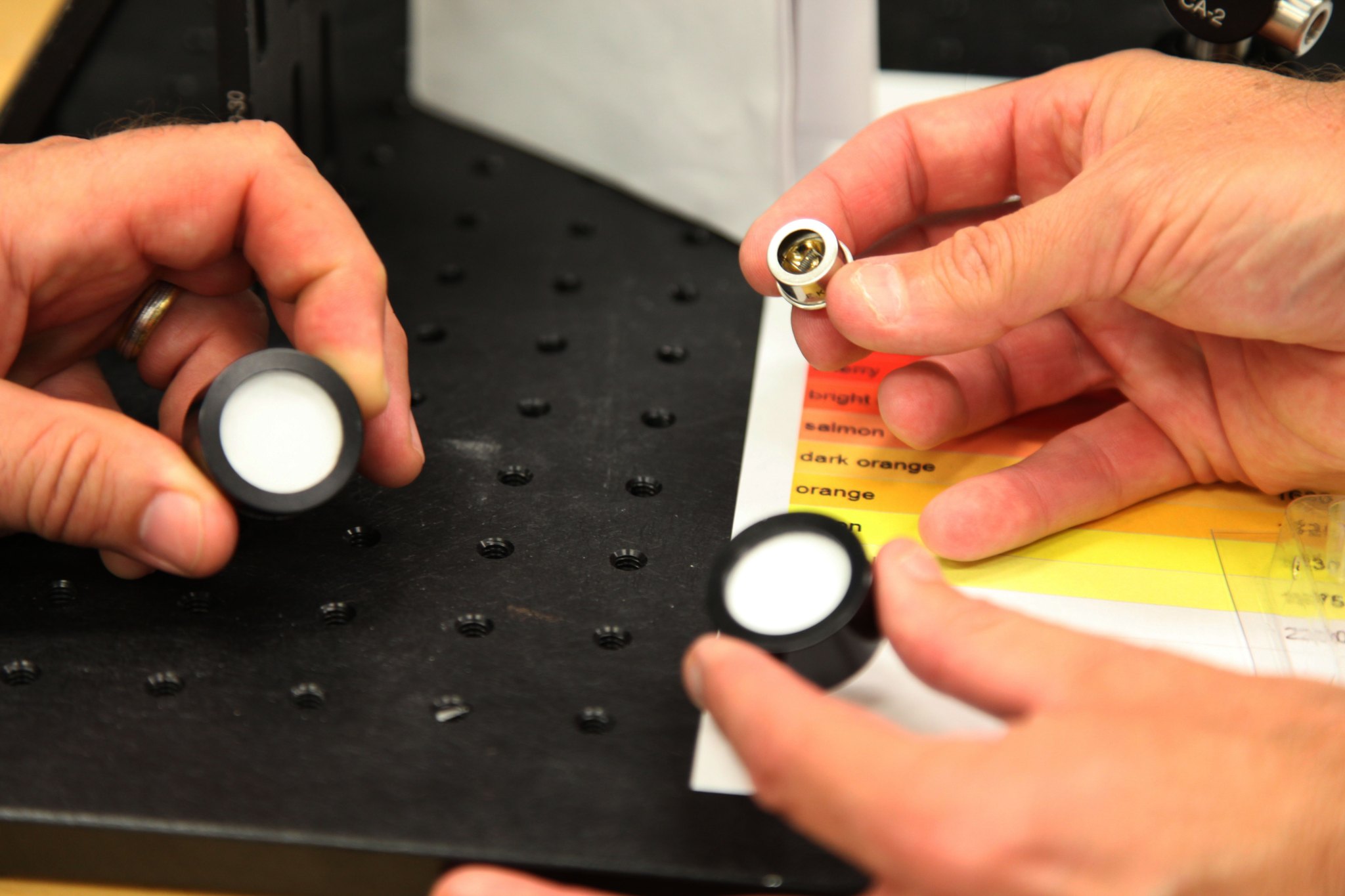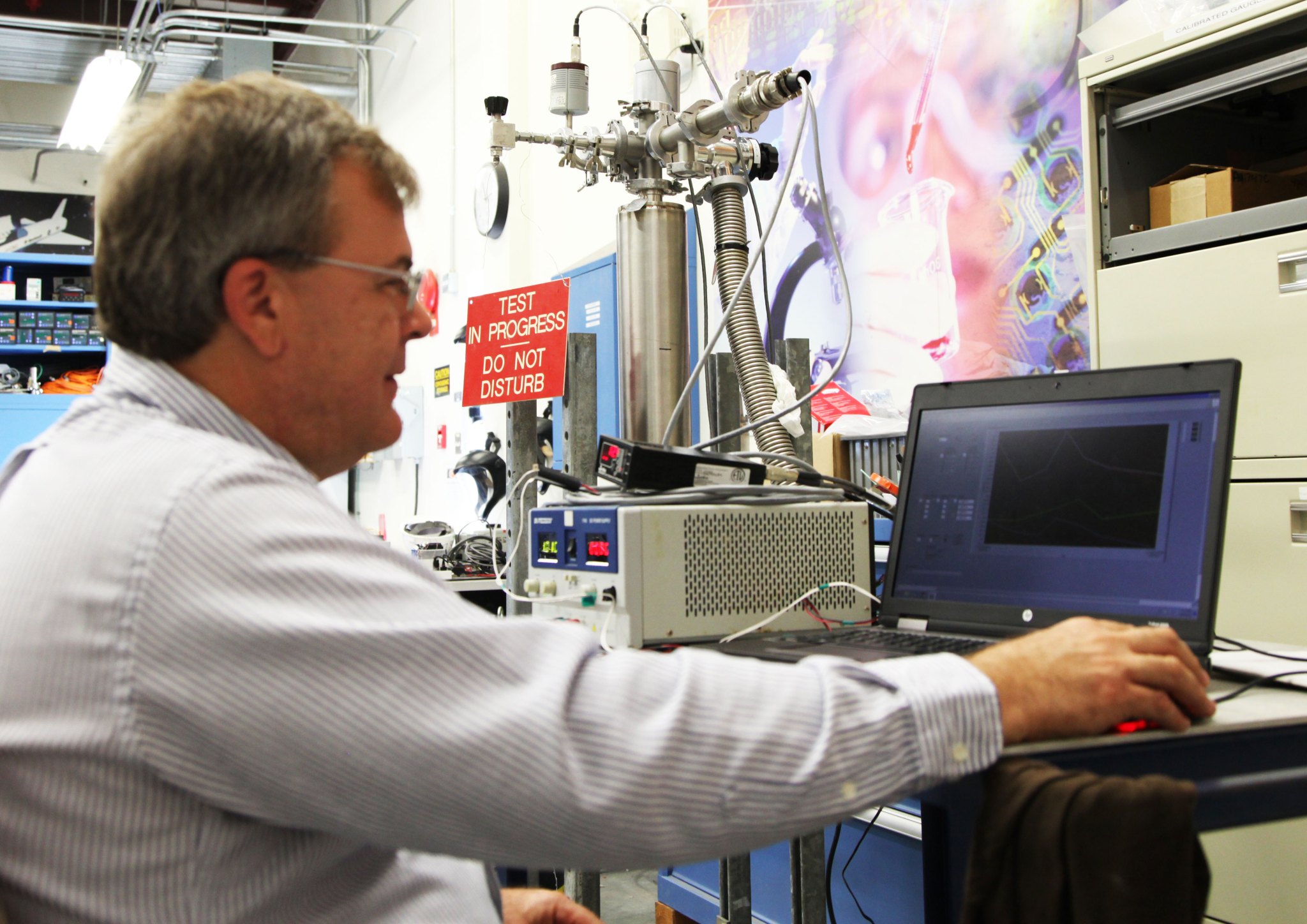By Bob Granath
NASA’s Kennedy Space Center, Florida
NASA’s Journey to Mars will require groundbreaking technologies and solutions to many complex problems. For a pair of NASA scientists at the Kennedy Space Center in Florida, an idea to help make that trip possible began with simply “wanting to understand why.”
During the Space Shuttle Program, Robert Youngquist, Ph.D., was among the center’s employees who was given a small, cardboard-mounted memento that included a piece of a shuttle’s payload bay liner.
“I remember studying this small piece of plastic with its reflective coating and wanting to understand why this was special,” Youngquist recently wrote in a report on reflective surface coatings. “After some research, I soon understood that it was designed to reflect sunlight, but still permit infrared energy to be emitted.”
Reflecting sunlight may be the key to multiple challenges in working on the moon and traveling to the Red Planet. Youngquist, along with co-principal investigator Mark Nurge, Ph.D., are researching cryogenic selective surface coatings. This innovative technology could enable storing cryogenic, or super-cold, liquids, shielding astronauts against radiation and helping create magnetic fields.
A key cryogenic element supporting spaceflight is liquid oxygen, often used as a rocket propellant which can be converted to a gas for breathing. Storing such cryogenics requires a coating that reflects the sun’s rays, keeping a container’s contents cold.
According to the U.S. National Institute of Standards and Technology, the field of cryogenics involves commodities with temperatures of less than 292 degrees below zero Fahrenheit. This is the normal boiling point of liquids that usually exist as gases, such as oxygen, hydrogen, nitrogen and air. The challenge is storing cryogenic liquids since they tend to boil off, making long-term storage difficult or impossible.
Youngquist explains cryogenic selective surface coatings theoretically will reflect almost all of the sun’s radiation. Being able to keep such commodities from boiling off would be a crucial breakthrough.
“In 2014, I decided to make an attempt at obtaining NIAC (NASA Innovative Advanced Concepts) funding by proposing the idea of a highly-reflective coating,” Youngquist said. “I knew that there were problems with maintaining cryogenics in deep space and saw that using nearly ideal selective surfaces might solve this.”
Both Youngquist and Nurge have been conducting research at Kennedy since the late 1980s.
A native of Rockville Centre, New York, Youngquist and his family moved to Florida when he was seven. He returned to the Empire State to earn a bachelors degree from the University of Rochester. He went on to study at Stanford University in California where he was awarded a doctorate in applied physics. Youngquist has worked at the Florida spaceport since 1988.
Nurge also grew up in New York before his family moved to Florida from Long Island when he was 17. After receiving bachelor’s and master’s degrees in electrical engineering from Georgia Tech, he earned master’s degrees in engineering management and physics followed by a doctorate in physics from the University of Central Florida. He has been at Kennedy since 1987.
The agency’s NIAC program is designed to give scientists and engineers, such as Youngquist and Nurge, the support needed to develop their visionary ideas into reality. NASA’s original NIAC director, Robert Cassanova, Ph.D., and coordinator, Sharon Garrison, often encouraged innovation by stating, “Don’t let your preoccupation with reality stifle your imagination.”
Nurge pointed out that under NIAC phase I funding, a project has nine months to develop from imagination into a viable, innovative concept.
“Phase I allowed us to perform the theoretical studies,” he said. “We developed computer models to make sure the concepts work, at least in theory.”
During that period, Youngquist and Nurge studied a “solar white” coating is predicted to reflect more than 99.9 percent of the sun’s energy.
“Not only would surfaces with this coating reflect solar radiation,” Youngquist said, “at the same time, they would emit infrared heat yielding a cooling effect — even in sunlight.”
So, what materials best reflect sunlight in space?
“Space shuttle thermal tiles were primarily made of glass fibers,” Nurge said. “We noticed this core material was very effective in scattering light. That concept led us to consider substances that scatter and reflect light over the sun’s electromagnetic spectrum.”
Theoretical models tested in Kennedy’s Applied Physics Laboratory showed that outside the Earth’s atmosphere, the cryogenic selective surface materials could remain cooled to 338 degrees below zero Fahrenheit.
“If this result holds up for real-world materials and conditions, then cryogenic storage and superconducting systems can be achieved in space without weight and space-consuming active cooling systems,” Youngquist said.
Such a result would enable long-term cryogenic storage in deep space and the use of large scale superconducting systems for such applications as galactic cosmic radiation (GCR) shielding and large scale energy storage.
Superconductors are substances that conduct electricity without resistance. Unlike the more familiar conductors such as copper or steel, a superconductor can carry a current indefinitely without losing any energy. Examples are powerful superconducting electromagnets used in maglev trains and magnetic resonance imaging, or MRI, machines used in hospitals.
Maglev trains use magnetic levitation to travel along a guide way using superconducting magnets to create both lift and propulsion.
The Earth’s magnetic field protects humans and those in low-Earth orbit from cosmic radiation. However, when a spacecraft travels well beyond Earth, shielding will be required to protect astronauts from radiation associated with solar flares and other forms of cosmic radiation.
Youngquist explains that while considering methods to shield astronauts from cosmic radiation while traveling in deep space, he considered electrostatic shielding, but could not find a workable path.
“I began to look at open magnetic field structures composed of long lengths (kilometers long) of superconducting wire located significant distances from the spacecraft,” he said. “I became convinced that this was the only practical route for protecting astronauts from GCR with an active shield. But the key problem was how to keep these wires cold so that they would stay superconducting.”
Cryogenic selective surface coatings may do just that.
In February, Youngquist and Nurge submitted their phase I study final report on theoretical modeling for cryogenic selective surfaces to NIAC officials. The scientists were subsequently awarded funding for an additional two years to further develop the concept and assess issues such as cost, performance, development time and the business case.
“During Phase II, we plan to study this concept by constructing the new coating and testing it in a simulated deep-space environment,” Nurge said. “We want to verify the performance of our theoretical models in a real-world environment. This will help determine if superconducting temperatures can be passively achieved in a deep-space environment beyond one astronomical unit from the sun.”
An astronomical unit is 92.8 million miles, the distance from the Earth to the sun.
“The ‘solar white’ coating is not paint, but consists of a moderately thick scattering layer, typically 2 to 5 millimeters,” Youngquist said. “It is composed of a material transparent to most of the solar spectrum. This layer acts as a “scatterer” to the sun’s light, performing the same reflective process as titanium dioxide in white paint – but much more so.”
Nurge added that the key is developing the “whitest-white” possible.
“The purest white will do the best in reflecting and scattering sunlight from the ultraviolet through the infrared,” he said.
In laboratory testing at Kennedy, Youngquist and Nurge have worked with chemists to develop samples of the “solar white” coating. They plan to expose the samples to light and heat-producing sensors to verify the surfaces are able to reflect the simulated energy and infrared light of the sun.
Over the next two years Youngquist and Nurge will perform “real-world’ testing which may result in one of the breakthrough technologies that will help enable space travel well beyond Earth.
“There are many challenges involved in deep-space exploration,” Youngquist said, “but several of these can be mitigated, or even solved, by the development of a coating that can reject most of the sun’s energy and yet still allow heat to be emitted.”














